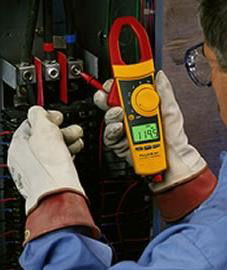All electrical installations must now be inspected, tested and certificated to the 17th Edition:

The 17th Edition does not vary greatly from the now defunct 16th Edition, but the changes in terminology, numbering system and additional requirements should be considered. In finding your way around, Part 6 contains electrical installation inspection and testing requirements, plus 'competency' references.
Regulations 610.5 (initial verification) and 621.5 (periodic inspection and testing) aim to ensure that those carrying out work should be 'competent'. Regulation 631.4 requires Electrical Installation Certificates, Periodic Inspection Reports and Minor Electrical Installations Works Certificates to be produced and authenticated by 'competent person(s)'.
Chapter 61 covers Initial Verification (inspection/testing of new electrical installation work), plus required inspections preceding testing. Chapter 62 covers Periodic Inspection and Testing for existing installations, while Chapter 63 covers Certification and Reporting. Note that Regulation 134.2.2 requires the installation designer to recommend when the first periodic inspection is to be carried out.
The only real alteration concerns insulation test limits for SELV, PELV and systems operating at less than 500V. For operating voltages up to 250V, a minimum insulation resistance of 0.5MO is now required, compared with 0.25MO previously. For operating voltages up to 500V, the minimum insulation resistance will be 1MO, rather than 0.5MO. There are no changes for continuity and RCD testing.
Any instruments providing fixed pass/fail indication for insulation tests on the basis of the old 16th Edition values need adjustment to take into account new values. Almost always, however, existing test equipment can be used, as long as it meets safety and specification requirements. It is important to be clear that, as long as electrical contractors own testers that comply with the 16th Edition that are in good order, they are suitable for all work to the 17th Edition. There is a lot of confusion about this but, as far as test instruments are concerned, nothing has changed - though Fluke's Ken West has noted that 'measuring instruments and monitoring equipment should be chosen to meet the requirements of the relevant parts of BS EN 61557, the standard covering electrical test instruments. Where such equipment does not meet the requirements of this Standard, it must provide no less performance and safety'.
Note that for NICEIC schemes, ONLY the Approved Contractor or Domestic Installer responsible for the work can issue an NICEIC certificate for that work, irrespective of the responsibility for the design and inspection and testing of the work.